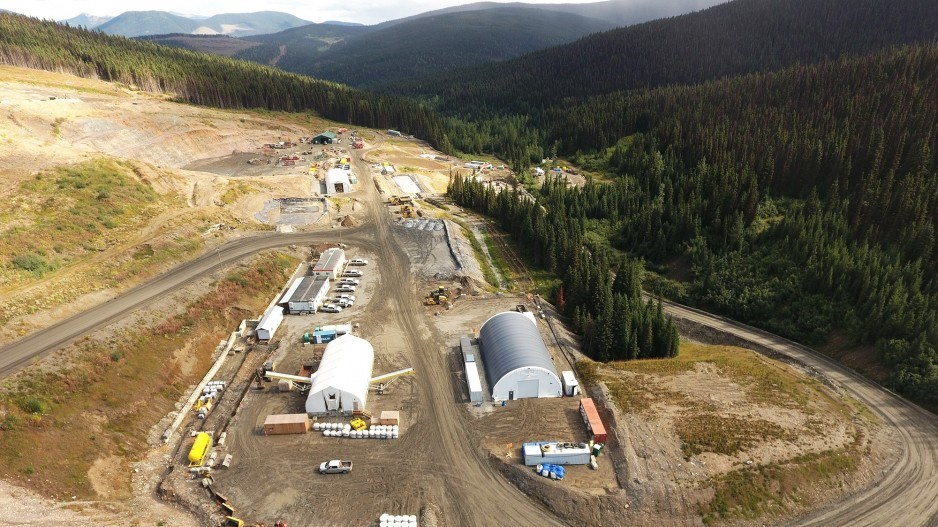Osisko Development Corp. (TSXV,NYSE: ODV) is hoping to get the final go-ahead from the Ministry of Energy, Mines and Low Carbon Innovation by the end of this year for its Cariboo Gold project near Wells, B.C.
The project is getting some pushback from the Xatśūll First Nation, however, which is threatening a legal challenge if its concerns are not addressed.
A year ago, the Cariboo Gold mine received its environmental certificate, and this week its Mines Act permit was referred to the Ministry of Energy, Mines and Low Carbon Innovation for a final decision.
The Xatśūll First Nation is raising objections, however, saying they are not satisfied with negotiations over an economic benefits agreement, and are threatening legal action. They are also raising concerns over the mine’s environmental impacts, including on caribou habitat.
According to the Ministry of Environment, the Xatśūll did not object to the mine during the BC Environmental Assessment process.
The ministry approved an environmental certificate for the project in October, 2023. The ministry noted that it was the first project “entirely assessed” under the new 2018 Environmental Assessment Act.
“All three Nations in whose territory project activities will occur participated in the environmental assessment,” the ministry said in a news release. “Lhtako Dené Nation and Williams Lake First Nation provided notices of consent, and Xatśūll First Nation advised the ministers that they did not object to the project.”
But not objecting is not quite the same as consent, and the Xatśūll -- formerly known as the Soda Creek Indian Band -- say the project does not have their consent.
“Any consent-based decision-making process for the project must be based on Xatśūll’s laws and values and be implemented in a manner consistent with the Declaration on the Rights of Indigenous Peoples Act (DRIPA) and the United Nations Declaration on the Rights of Indigenous Peoples (UNDRIP),” the First Nation said in a news release.
“Xatśūll previously informed the provincial Environmental Assessment Office that it was withholding its consent for the project, which it will continue to do until its concerns have been adequately addressed.
“Although Xatśūll is currently at the table with Osisko, the nation is asking for Osisko to reach an agreement with Xatsull before taking any further steps to complete the permitting process.”
“We emphasize that Xatśūll would like to see sustainable resource development in our territory, but it’s remarkable that in 2024 the province and Osisko continue to barge ahead with this mine without our consent, contrary to DRIPA and UNDRIP,” said Xatśūll Kukpi7, Chief Rhonda Phillips.
“If the permitting processes move ahead without addressing our concerns, any permits that are issued will be highly vulnerable to legal challenges.”
In response to the Xatsull’s challenge to the project, Osisko CEO Sean Roosen points out the company has signed benefits agreements with two other First Nations – the Lhtako Dené Nation in 2020 and the Williams Lake First Nation.
"We have made good faith and reasonable efforts in the past two years to reach agreement with Xatśūll First Nation, including reasonable offers for financial and other benefits along substantially similar frameworks as those offered to, and agreed by, other Indigenous communities," he said. "Our efforts have focused on providing meaningful benefits to all Indigenous nations, whilst ensuring the project remains viable.
"We must ensure the integrity of the permitting process is respected, because we believe the consultation on this project has been robust. We stand by our record to date in meeting our obligations and expect the provincial government will act within its authority. Our commitment to engaging with Xatśūll First Nation will continue including after the permit decision is made.”
The company said it hopes to a receive its Mines Act permit sometime in the fourth quarter of this year.
Osisko Development has estimated the initial capital cost for phase 1 of the Cariboo Gold project to be $137 million, but estimates a total capital spend of $1 billion for the life of the mine.



